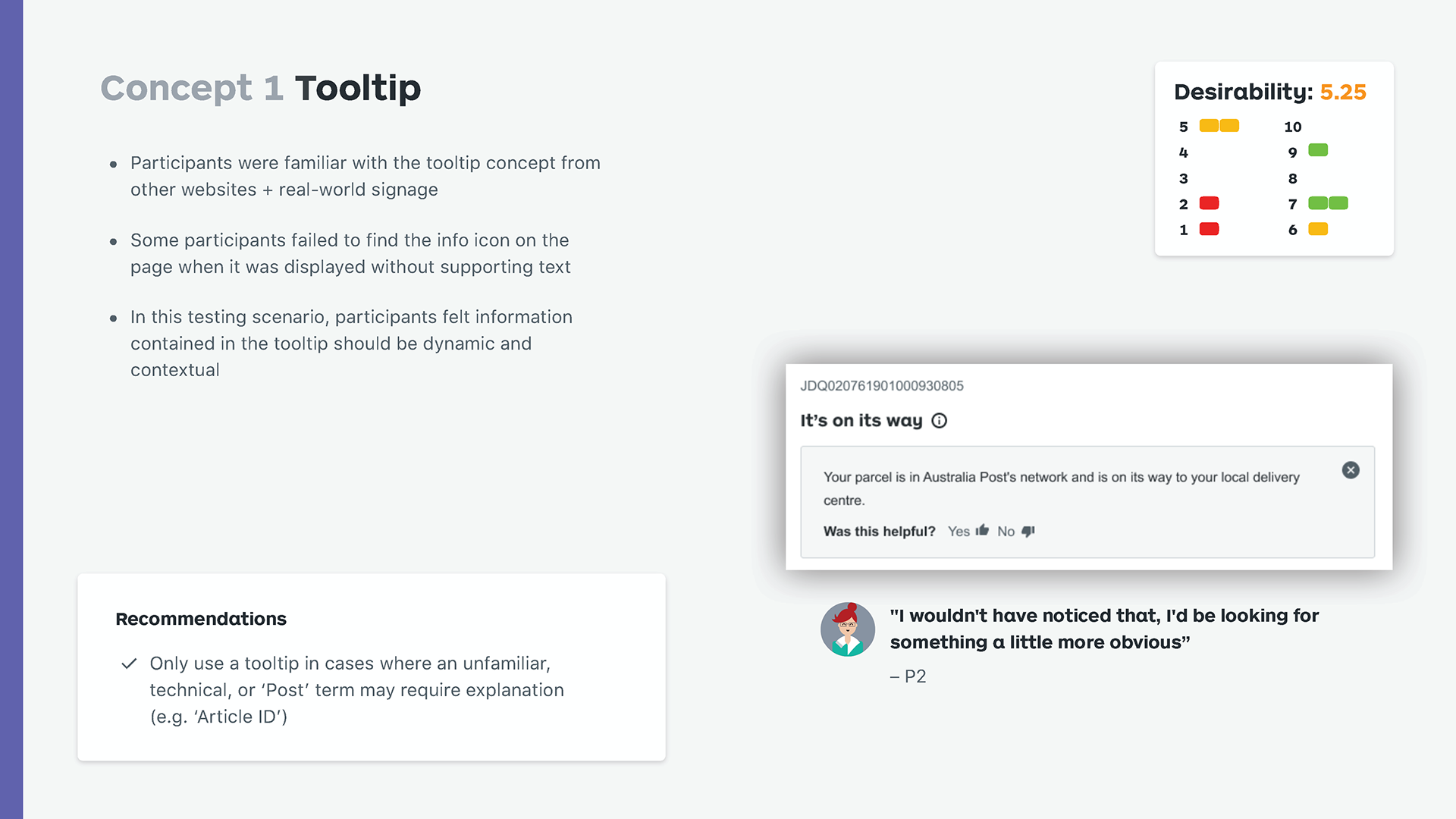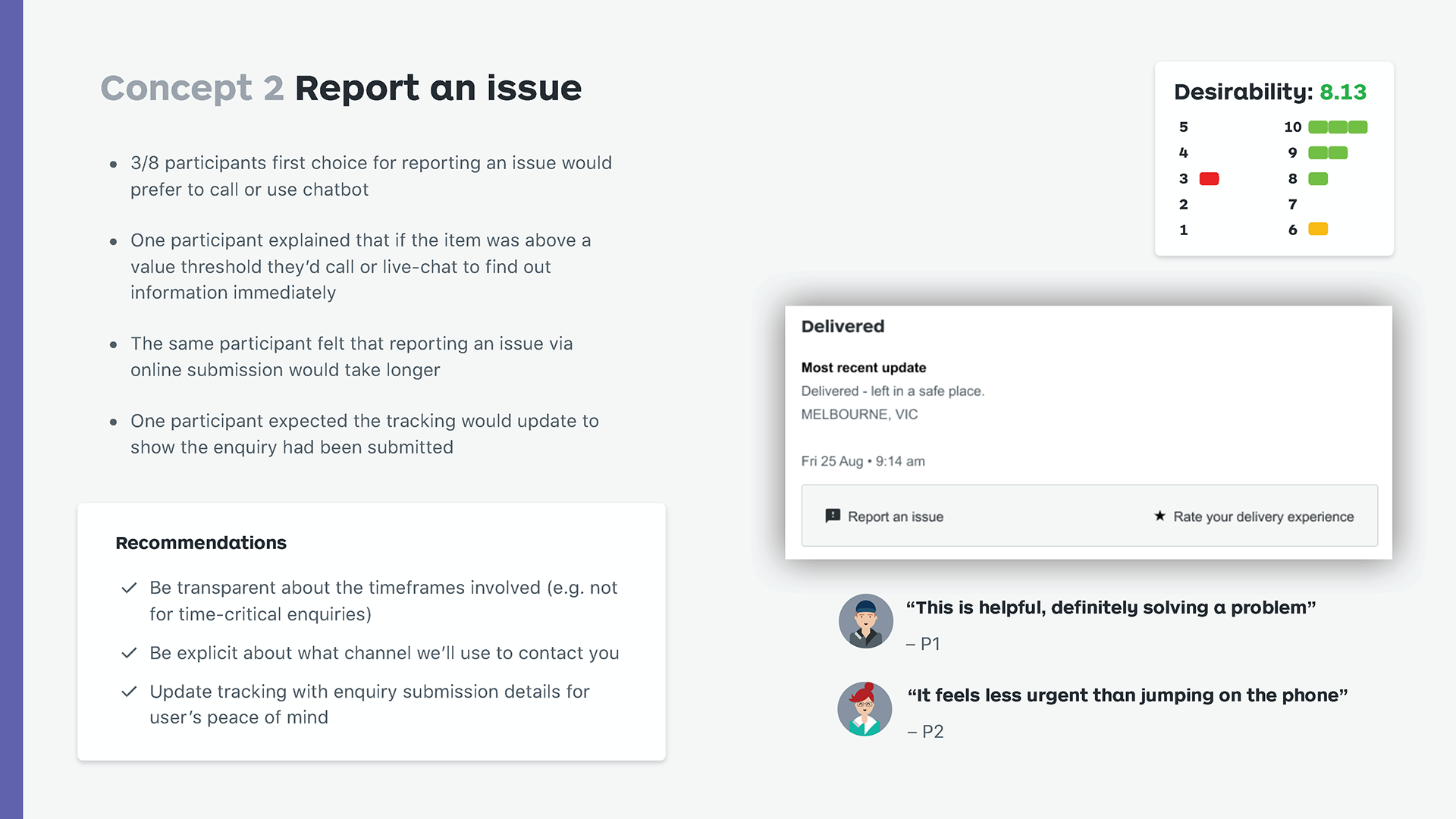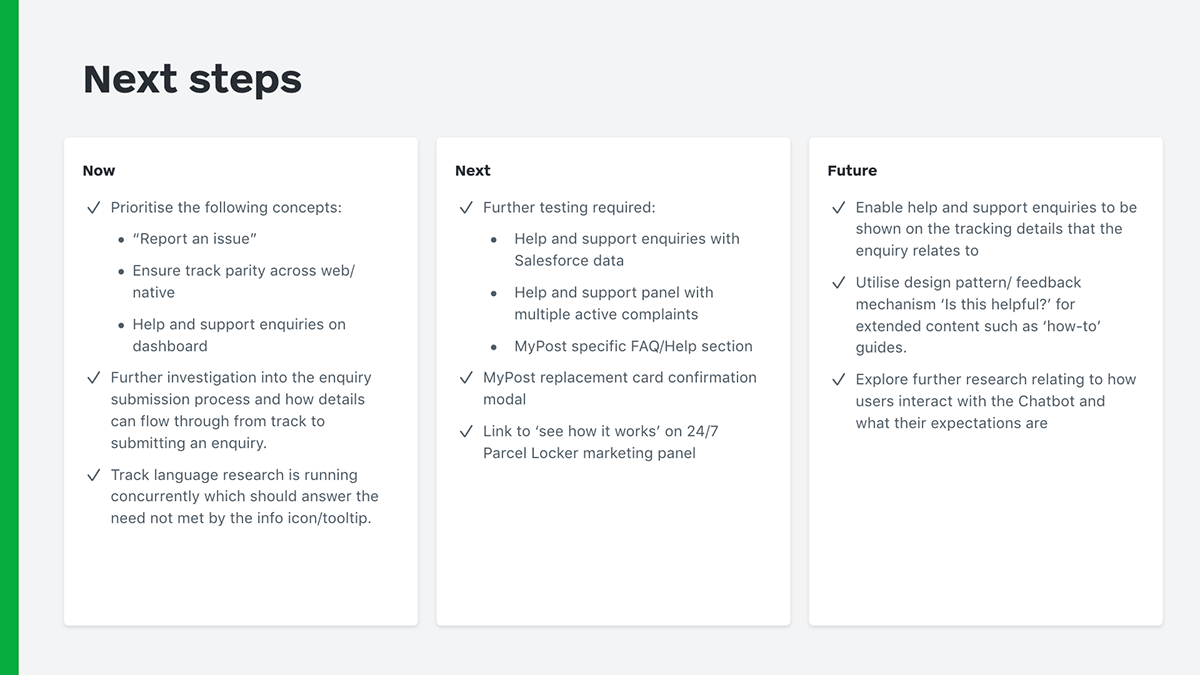Australia Post
Help & Support Discovery
Australia Post customers seeking help and support were receiving a sub-par experience. Charged with improving the digital experience, my team undertook a discovery process to (1) understand the customer experience, and (2) recommend changes. We delivered a roadmap of sized, customer-validated and prioritised features for the next 12 months.

Role
Snr. Product DesignerTimeline
Oct 2018 - Jan 2019Team
- UX Researcher
- Digital Producer
Responsibilities
- User Research
- Workshops
- Ideation
- Prototyping
- Concept Testing
Discovery
We undertook a number of research activities to contextualise and frame the problem to be solved.
Reports indicated delivery issues were the primary reason for internal complaints. Similarly, the Ombudman's report indicated that the majority of their complaints related to lost and delayed deliveries.
Key finding
Concentrate on supporting customers experiencing lost and delayed deliveries.
Survey data revealed user difficulties related to:
- Locating the help and support portal
- Using the global header to navigate back to the main website
- Understanding that different systems require different authentication credentials
Key finding
Many user issues stemmed from a loose coupling between the help and support portal and the main Australia Post website.
Analytics from the newly launched FAQ portal helped us understand how users felt about the portal and what content most interested them. A low customer effort score (1.67) evidenced dissatisfaction with the help & support portal. Consistent with the Ombudsman's report, the most-visited FAQ content was related to tracking parcels.
Key finding
The underperforming parcel tracking support page is an important first step in many user journeys.
We interviewed the customer service operators and listened to customer calls. While calls to Australia Post typically concerned lack of tracking updates (as per the Ombudsman's report), we found that calls to the MyPost hotline were driven by:
- Confusion around how the MyPost product worked
- Cases of mismatched identity
- Difficulties in closing accounts
This was because the existing FAQs did not accurately instruct what users to do in such circumstances, leading to confusion about who had responsibility for the issue, leading to users seeking a source of truth.
Key finding
Customers typically call the MyPost hotline when unsure whether an issue is their responsibility or AP's.
Experience principles
Research helped create experience principles to underpin our newly proposed solutions.
Use a single log-in
Only require a single credential to access all Australia Post services.
Use what you know about me
Respect our user's time by leveraging any information they have previously supplied to us (e.g. during user registration).
Keep me informed
Ensure that all active enquiries are easily accessible and the current status is made clear.
Ideation workshops
Research findings helped frame an ideation session with three multi-disciplinary teams.
Each team focused on how help and support could be improved in different areas of the MyPost ecosystem. Teams presented their top concepts, and the winning concepts were then vetted for technical feasibility.
Activities
- Ideation workshop
- Wireframing


Concept testing
The winning concepts from ideation were wireframed and prototyped for user-testing.
At the end of each testing scenario customers were asked to rate both the overall concept but also specific aspects of the experience. This allowed for the rating of features in terms of customer desirability. Customer feedback was synthesised and insights were presented alongside a final recommendation for each feature.
Activities
- Prototyping
- User testing


Communicating findings
The desirability and usability of concepts were compiled into a report alongside insights detailing hypothesised magnitude and impact.
Analysis of each feature/fix took into account the technical feasibility, customer desirability and the magnitude of each proposal. Together, this allowed successful prioritisation and backlog of help and support features - greatly assisting managerial staff in deciding which features to develop for the following quarter(s).
Activities
- User testing report
- Product strategy

Was discovery successful?
Yes! The dedicated research time ensured we developed enough context to create solutions for the right problems. The workshop ensured we tackled the problems together, and that the larger problems were broken down into technically feasible features. The smaller features meant we could swiftly implement the Ombudsman recommendations.
A follow-up Ombudsman report, published June 2019, stated that Australia Post “has made significant progress towards implementing our recommendations”, of which a key component was “making it easier for customers to lodge complaints and enquiries online”. They noted that complaints had reduced in proportion to parcel volumes for the 2017-2018 financial year.